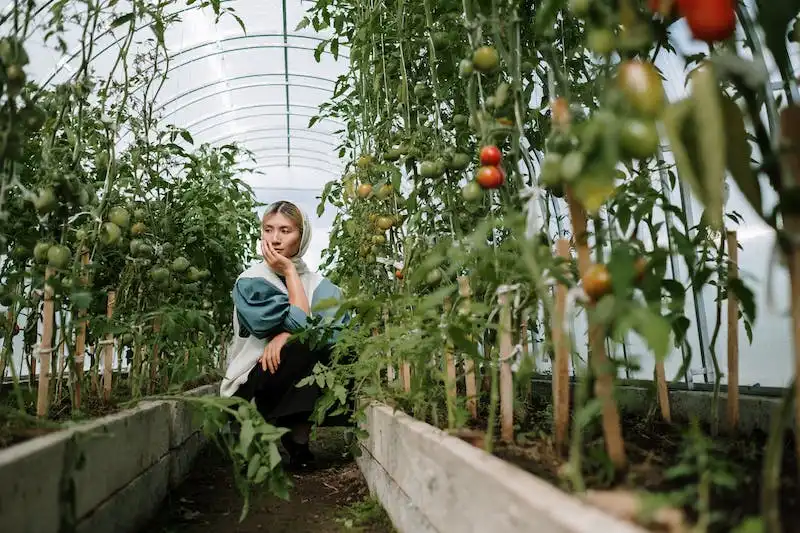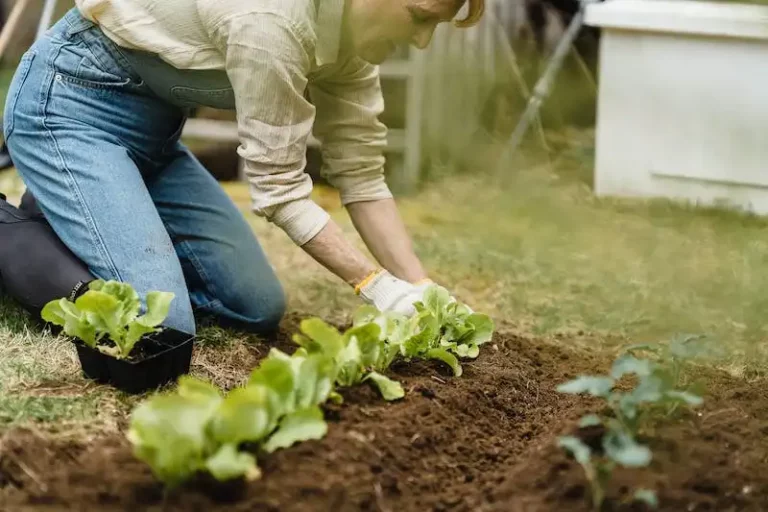Welcome to Purdue News, your source for all the latest information on tests, sign-ups, and news at Purdue University. We understand that picking the right university can be a tough decision, but we’re here to help guide you through the process. At Purdue, we believe in the power of education and the opportunities it provides. Whether you’re a prospective student looking to begin your journey or a current student navigating your way through campus life, we have you covered.
Though we may be known for our academic programs, Purdue News also covers a wide range of topics, including developments in the grocery industry. With the growing popularity of home gardens, we’re here to give you the basics of planting and caring for your own fruits and vegetables. In particular, we’ll be taking a closer look at watermelons and honeydew melons.
Beginners may be surprised to learn that watermelons and honeydew melons are actually part of the same plant species, C. chinensis. However, they differ in terms of their flavor, shape, and texture. The basics of growing these melons are similar, so don’t worry if you’re new to gardening. We’ll guide you through the process step by step.
When it comes to picking the perfect watermelon or honeydew melon, there are a few tricks to keep in mind. Look for a melon that has a smooth, firm skin and a yellow or creamy spot on the bottom. These are indications that the melon has ripened fully and is ready to be enjoyed.
Storing your watermelons and honeydew melons is just as important as picking them. These melons prefer warm, full sun spots in your garden. Once they have ripened, they can be stored in a cool, dry place for up to a week. If you’re looking to extend the harvest and enjoy melons throughout the winter, there are some additional steps you can take. That’s where our experts come in. They’ll give you all the tips and tricks you need to know.
So whether you’re a seasoned gardener or a first-time melon grower, Purdue News is here to help. Stay tuned for more articles on everything from growing vegetables in small spaces to the best varieties of watermelons. With our guidance, you’ll have a bountiful harvest and enjoy delicious melons all season long.
How to Pick Perfectly Ripe Watermelons
Watermelons, scientifically known as Citrullus lanatus var. lanatus, are a delicious and refreshing fruit that many people enjoy during the summer months. However, picking a perfectly ripe watermelon can be a bit of a challenge for consumers, growers, and gardeners alike. Fortunately, there are a few indicators to help you determine when a watermelon is ready to be harvested and enjoyed.
1. Look for a creamy yellow spot on the bottom of the watermelon, also called the field or belly spot. This spot, known as the “gracian spot,” signifies that the watermelon was grown on the ground and ripened in the sun.
2. The watermelon vine attachment should be dry and withered. If it is green and alive, this indicates that the watermelon is not yet fully ripe.
3. Give the watermelon a good thump. A ripe watermelon will have a deep, hollow sound. If it sounds dull or flat, it may not be fully ripened.
4. Check the watermelon for firmness. A ripe watermelon will feel firm but slightly springy when gently squeezed. If it feels mushy or too hard, it may not be ripe yet.
5. Look for a uniform shape and color. A ripe watermelon should have a consistent color throughout, without any green or white spots. The skin should also have a dull finish rather than a shiny appearance.
6. Pay attention to the size and weight of the watermelon. A ripe watermelon will generally feel heavy for its size due to its high water content. However, be cautious of watermelons that are excessively large, as they may be over-ripe.
7. Lastly, consider the time of year and the region where the watermelon was grown. Watermelons tend to ripen best in warm, southern climates. If you’re buying a watermelon in a grocery store during the winter months or in a colder region, it may not be fully ripe as they are typically harvested during the summer.
Remember that these are general guidelines, and each individual watermelon may have its own unique characteristics. Additionally, there are many different varieties of watermelons, each with its own genetic traits and ripening patterns.
By following these tips, you’ll be more equipped to pick a perfectly ripe watermelon that is sweet, juicy, and ready to be enjoyed!
Video: When to Pick Perfectly Ripe Watermelons Grown in the Garden – Best Time to Harvest Every Time
Knowing when to pick watermelons is crucial to enjoy the sweet and juicy taste. If you pick a watermelon too early, it might not be fully ripe and lack flavor. On the other hand, if you wait too long, it can become overripe and lose its taste and texture. In this video, we will show you the best time to harvest watermelons and some tricks to determine their ripeness.
When watermelons are grown in the garden, it can be a bit challenging to determine their readiness. However, there are some indications that can help you determine the perfect time to pick them.
- Tap the Watermelon: One of the ways to determine if a watermelon is ripe is by tapping it. If it sounds hollow, it is an indication that the watermelon is ripe.
- Check the Color and Texture: Ripe watermelons tend to have a dull and matte appearance, while unripe ones are shiny. Additionally, the skin of a ripe watermelon usually has a uniform color. If you notice any green or white spots, the watermelon is not yet ripe.
- Look for a Yellow Spot: A ripe watermelon will have a creamy yellow spot on its underside. If this spot is white or green, it means the watermelon is not fully ripe.
- Check the Stem: The stem of a ripe watermelon will be dried and brown. If it is still green or has any attached tendrils, it is an indication that the watermelon is not ready to be harvested.
- Use a Ripeness Meter: Some growers use a ripeness meter to determine when a watermelon is ready to be picked. This device measures the sugar content of the fruit and gives a clear indication of its ripeness.
Once you have determined that your watermelon is ripe, it’s important to pick it quickly. If you leave it on the vine for too long, it might overripen, and you might lose the flavor and texture you desire.
After picking your watermelon, you can store it in a cool and dry place, like your basement or a root cellar. This can help extend its freshness and keep it edible for a longer duration.
We hope this video helps you pick perfectly ripe watermelons every time you harvest them from your garden. Enjoy!
How to pick ripe watermelons from the store
When it comes to picking out a watermelon from the grocery store, it can sometimes be a bit of a challenge. However, with a little bit of know-how, you can learn to choose the ripest and sweetest watermelons for your enjoyment.
One helpful tip is to look for a watermelon with a yellowish spot on its underside. This usually indicates that it has been properly ripened in the field. The color should be a deep yellow and not a pale or white shade. Additionally, the skin of the watermelon should have a slightly dull finish rather than a shiny appearance.
It’s also important to check the watermelon for any dents, cuts, or bruises. These can be signs of mishandling and could affect the taste and quality of the fruit. Furthermore, give the watermelon a gentle tap to test its ripeness. If it sounds hollow rather than dull, then it is likely ripe and ready to eat.
Another helpful trick is to give the watermelon a slight squeeze. It should feel firm but not too hard or too soft. A ripe watermelon will typically have a bit of give to it, indicating that it is juicy and ripe on the inside.
The size and shape of the watermelon are also important factors to consider. Watermelons that are evenly shaped and symmetrical tend to be better choices. Additionally, smaller watermelons are often sweeter than their larger counterparts.
Keep in mind that watermelons do not continue to ripen once they have been picked. Therefore, it’s important to choose a fully ripe watermelon at the store. If you’re planning on storing the watermelon for a longer period of time, it is recommended to keep it in a cool and dark place, such as the refrigerator.
Overall, selecting a ripe watermelon from the store is a relatively simple task with a few key indicators to look out for. By following these tips, you can ensure that you pick a delicious and sweet watermelon to enjoy.
| Helpful Tips for Picking Ripe Watermelons: |
|---|
| Look for a yellowish spot on the underside of the watermelon |
| Choose a watermelon with a slightly dull skin |
| Avoid watermelons with dents, cuts, or bruises |
| Gently tap the watermelon and listen for a hollow sound |
| Squeeze the watermelon to ensure it has a firm but not too hard or soft texture |
| Consider the size and shape of the watermelon |
| Remember that watermelons do not continue to ripen after picking |
| Store ripe watermelons in a cool and dark place, such as the refrigerator |
Do watermelons slip off of the vine
Watermelons are a popular summertime treat, and many people wonder about the proper way to pick and store them. In a video by Purdue News, you can learn more about watermelons and how to tell if they are ripe.
Watermelons are typically harvested when they are fully ripe. Unlike some other fruits, like tomatoes or bananas, watermelons do not continue to ripen once they are picked. That is why it is important to know how to tell when a watermelon is ready to be harvested.
One way to tell if a watermelon is ripe is by looking at the color. A ripe watermelon will have a dull, matte appearance, while an unripe watermelon will be shiny. Additionally, the spot where the watermelon was sitting on the ground should be a creamy yellow color, not white or green.
Another way to check if a watermelon is ripe is by tapping it. If it sounds hollow, that is a sign that the watermelon is likely ripe. If it sounds dull, it may not be quite ready yet.
When picking a watermelon, it is important to handle it gently. Watermelons can slip off the vine easily when they are not fully ripe, so be sure to hold onto the vine firmly when picking.
After picking a watermelon, it should be stored in a cool, dry place. Watermelons can last for about a week when stored properly. If you are looking to keep a watermelon for longer, you can store it in the refrigerator. However, keep in mind that refrigeration may affect the taste and texture of the watermelon.
So, the next time you are at the grocery store or your local farmers market, be sure to pick up a perfectly ripe watermelon. They make for a delicious and refreshing summer treat!
To access the full video and learn more about watermelon ripeness and harvest tips, click on the link here.




